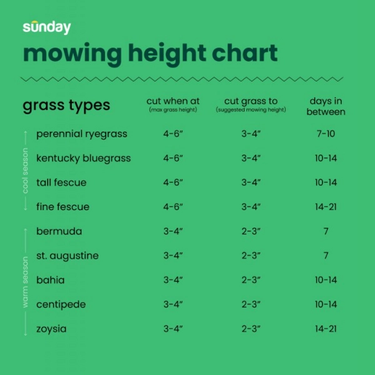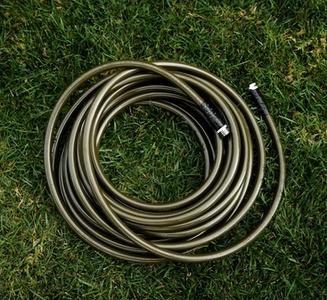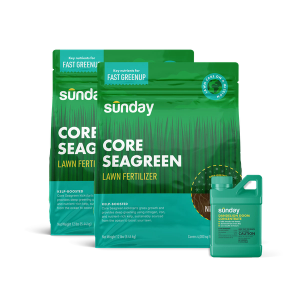Getting new sod is a great experience whether you do it yourself or have it professionally installed. The grass will look oh so healthy and is just begging for a game of croquet. Sadly, many new sod installations barely make it to the end of the season due to improper care. Freshly installed sod requires extra maintenance, and without proper care, you’ll be screaming “Oh my Sod!!”
GET OFF MY LAWN… for a few weeks at least
This mistake is made sadly too often. New sod should be relatively free of heavy traffic until its roots get into the soil. Park your mower away and get ready to walk the dogs more, ‘cause the new grass needs to get comfortable. After installing sod, the time for establishment will vary based on climate, grass type, and soil quality, but it’s typically 2-3 weeks.
Water, water, water
Sod needs a special watering schedule in these first few weeks so it feels welcome in its new home.
Float the sod.
Water 30-45 min. immediately after laying the sod to ensure the water gets deep into the soil.
Check the soil.
Check to see how deeply the water infiltrated into the soil by sticking a screwdriver in or digging a small hole. Ideally, you want the water to get at least an inch deep, though several inches is better!
Dry it down.
Let the soil dry out for 3-4 days before “floating” again. This will allow the moisture to wick up from deeper in the soil profile, and encourage the roots to move down deep to meet the moisture. Repeat the float-dry cycle every 3-4 days, depending on weather.
This schedule is just a guideline, and you’ll need to keep an eye on your grass and soil. You don’t want the under-sod soil to become saturated (poking in a bamboo chopstick can help you check this). If the grass turns tan, dark blue, grey or any other color than green, chances are it needs more water.
It’s been three weeks, am I done yet?
Almost, but not quite. At this point, you should perform a tug test to see if the roots have extended into the soil below the sod. Tug a small piece of the sod - if you feel resistance, you know your grass is well-rooted and ready for action! If your roots are ready to go, you can go ahead and switch to a normal watering schedule.
When should I start mowing?
The last step is proper and gradual mowing. We recommend following these guidelines:
- Before you begin to mow, make sure those mowing blades are extra sharp. Otherwise you’re going to tug or pull up the newly established sod with shallow roots.
- Next determine the mowing height of your grass. Don’t let it grow too long otherwise you’ll shock it and set it back.

- Start mowing when it reaches recommended height and then follow the ⅓ rule after that. This might make things difficult if you’re aiming for optimal mowing height, but there’s a nice work around. Simply mow every other day towards your target height while maintaining the 1/3 rule.
This sure seems like a lot of rules and guidelines
It sure is! Grass is a living organism just like you and me; it needs to be treated as such. In the case of sod and plugs, the grass was literally ripped away from its home and forced to live in a strange new place; it needs some extra TLC for a safe transition. After the first three weeks, you’ll still want to keep a close eye on your lawn and quickly identify and locate any problems. Moderate foot traffic is fine in the first year, but I wouldn’t host any rugby practices on your infant lawn.
The first year is the toughest, but after that it gets much, much easier. When the grass comes back the following spring, it will be far better acclimated and comfortable in its new home; it won’t need as much attention.



















